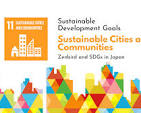The Importance of Sustainable Cities and Communities in Achieving the SDGs
Sustainable Development Goal (SDG) 11 focuses on making cities and human settlements inclusive, safe, resilient, and sustainable. This goal recognizes the critical role that cities and communities play in achieving overall sustainable development.
With rapid urbanization taking place worldwide, the need for sustainable cities and communities has never been more urgent. By promoting sustainable urban planning and management practices, we can create cities that are environmentally friendly, socially inclusive, economically viable, and resilient to climate change.
One of the key aspects of SDG 11 is ensuring access for all to adequate, safe, and affordable housing. This not only addresses the basic human need for shelter but also contributes to reducing poverty and inequality within cities. By providing affordable housing options close to job opportunities and essential services, we can improve the quality of life for urban residents.
Another important focus of SDG 11 is promoting sustainable transportation systems. By investing in public transport infrastructure, pedestrian-friendly streets, cycling lanes, and green spaces within cities, we can reduce air pollution, congestion, and greenhouse gas emissions. Sustainable transportation not only benefits the environment but also enhances mobility for all residents.
In addition to infrastructure development, creating sustainable cities requires active community participation and engagement. Empowering local communities to participate in decision-making processes regarding urban development projects ensures that their diverse needs and perspectives are taken into account. Building strong social connections within communities fosters a sense of belonging and collective responsibility for creating a more sustainable future.
By working towards building sustainable cities and communities as outlined in SDG 11, we can address interconnected challenges such as poverty alleviation, climate change mitigation, social inclusion, and environmental protection. Through collaborative efforts at local, national, and global levels, we can create a more equitable and resilient urban future for generations to come.
Understanding SDG 11: Importance, Challenges, Principles, and Related Goals
- Why is SDG 11 important?
- What are the issues with sustainable cities and communities?
- What are the principles of sustainable cities and communities?
- What is the goal of SDG 14?
Why is SDG 11 important?
SDG 11 is crucial because it focuses on creating sustainable cities and communities that are inclusive, safe, resilient, and environmentally friendly. By achieving the targets set out in SDG 11, we can address pressing urban challenges such as rapid urbanization, inadequate housing, lack of basic services, and environmental degradation. Sustainable cities not only improve the quality of life for residents but also contribute to economic growth, social equity, and environmental protection. SDG 11 plays a vital role in promoting sustainable urban development practices that benefit present and future generations by ensuring that cities are well-planned, accessible, and environmentally sustainable.
What are the issues with sustainable cities and communities?
One of the frequently asked questions regarding SDG Sustainable Cities and Communities revolves around the challenges and issues faced in achieving sustainability in urban areas. Some of the key issues include inadequate urban planning leading to sprawl and inefficient land use, lack of affordable housing options exacerbating homelessness and inequality, insufficient public transportation systems contributing to traffic congestion and air pollution, limited access to green spaces impacting residents’ well-being, and inadequate waste management leading to environmental degradation. Addressing these issues requires integrated approaches that prioritize sustainable urban development, community engagement, equitable access to resources, and resilience to climate change impacts. By identifying and tackling these challenges head-on, we can work towards creating more livable, inclusive, and environmentally friendly cities for all.
What are the principles of sustainable cities and communities?
The principles of sustainable cities and communities encompass a holistic approach to urban development that prioritizes environmental protection, social equity, economic prosperity, and resilience to climate change. Key principles include promoting compact and efficient urban design to reduce sprawl and minimize resource consumption, integrating green spaces and biodiversity into urban landscapes to enhance quality of life, fostering inclusive and participatory decision-making processes that engage diverse stakeholders in planning and governance, investing in sustainable transportation infrastructure to reduce emissions and improve accessibility for all residents, and ensuring access to affordable housing, basic services, and opportunities for livelihoods to create thriving communities. By adhering to these principles, cities can become more sustainable, livable, and resilient environments for current and future generations.
What is the goal of SDG 14?
The goal of Sustainable Development Goal (SDG) 14 is to conserve and sustainably use the oceans, seas, and marine resources for sustainable development. SDG 14 aims to protect marine ecosystems, reduce marine pollution, address ocean acidification, and promote sustainable fishing practices to ensure the health and resilience of our oceans. By focusing on the conservation and sustainable management of marine resources, SDG 14 seeks to safeguard the biodiversity and ecosystem services provided by our oceans for current and future generations.

